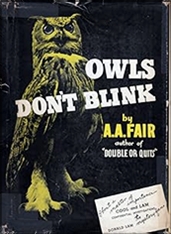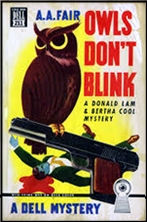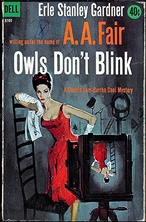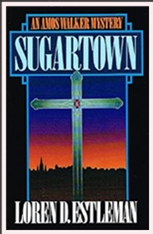Mon 12 Aug 2024
A 1001 Midnights Review: E. X. FERRARS – Alive and Dead.
Posted by Steve under 1001 Midnights , ReviewsNo Comments
by Marcia Muller
E. X. FERRARS – Alive and Dead. Doubleday Crime Club, hardcover, 1975. Bantam, paperback, 1982.

The novels of E. X. Ferrars (a pseudonym of Moma Brown, who also writes under the name of Elizabeth Ferrars) are best described as quiet and polite. The characters are usually normal middle-class British people — which is not to say they are dull: many are writers or artists or engaged in otherwise unusual professions; the women are independent and strong. But they are people to whom violence seldom happens: and when it does, they are shocked, but willingly take charge and get to the bottom of these unexpected happenings.
Martha Crayle is a typical Ferrars heroine. Middle-aged and twice divorced, she has struggled to raise two sons while caring for an invalid aunt and running a rooming house. When the aunt dies and leaves her an unexpected legacy, she moves out all her boarders except the reserved and stem Mr. Syme (who has become her confidant and, when crime strikes, a sort of Watson) and takes up volunteer work for the National Guild for the Welfare of Unmarried Mothers.
It is at their offices that she meets Amanda Hassall, a young pregnant woman who claims she has been deserted by her husband and impregnated by the man she is living with. Amanda does not wish to marry the baby’s father, nor does she want to put the child up for adoption as her parents have suggested. Martha takes the girl home, and a day later takes in another pregnant woman, Sandra Aspinall.

As Mr. Syme has darkly hinted, Martha should not have given refuge to these total strangers. Before Amanda has spent two nights in the house, a murdered man turns up in a local hotel, and she is reported to have been on the scene.
Amanda insists the victim is her estranged husband, but her parents –who appeared shortly before the body was discovered — claim the husband died in an airplane crash the year before. In addition to the parents, the boyfriends of both young women arrive, and by the Lime murder is done twice, Martha thoroughly regrets her involvement and wishes she had listened to Mr. Syme.
The plot twists and turns (with plenty of surprises) all the way to the very end. Ferrars writes well and creates characters that are sure to enlist her readers’ sympathies. This novel is one of her best.
———
Reprinted with permission from 1001 Midnights, edited by Bill Pronzini & Marcia Muller and published by The Battered Silicon Dispatch Box, 2007. Copyright © 1986, 2007 by the Pronzini-Muller Family Trust.


















